Strongest Economy Ever? Americans Receive More in Benefits Than Pay in Taxes
The $2.2 trillion in government transfers is more than the $1.7 trillion paid in personal income taxes

At the beginning of August, I discussed the following tweet from the President:
What the Market wanted to hear from Jay Powell and the Federal Reserve was that this was the beginning of a lengthy and aggressive rate-cutting cycle which would keep pace with China, The European Union and other countries around the world….
— Donald J. Trump (@realDonaldTrump) July 31, 2019
“But if it is the ‘strongest economy ever,’ then why the need for aggressive rate cuts which are ’emergency measures’ to be utilized to offset recessionary conditions?”
The following chart should quickly put that claim to rest.
While the claims of an exceptionally strong economy rely heavily on historically low unemployment and jobless claims numbers, historically high levels of asset prices, and strong consumer spending trends, there is an underlying deterioration that goes unaddressed.
For example, while reported unemployment is hitting historically low levels, there is a swelling mass of uncounted individuals that have either given up looking for work or are working multiple part-time jobs. This is shown by those “not in labor force” as a percent of the working-age population, which has skyrocketed since the recession.
The employment to population ratio would not still be at levels from the 1980s.
If employment was indeed as strong as reported by government agencies, then social benefits would not be comprising a record high of 22% of real disposable incomes. Here is the breakdown:
- 40 million Americans on food stamps
- An estimated 50% of the 330 million Americans in this country get at least one federal benefit, according to the Census Bureau.
- An estimated 63 million get Social Security; 59.9 million get Medicare; 75 million get Medicaid; 5 million get housing subsidies; and 4 million get Veterans’ benefits.
Those numbers continue to rise.
Without government largesse, many individuals would literally be living on the street. The chart above shows all the government “welfare” programs and current levels to date. While unemployment insurance has hit record lows following the financial crisis, social security, medicaid, veterans’ benefits, and other social benefits have continued to rise and have surged sharply over the last few months.
With 1/5 of incomes dependent on government transfers, it is not surprising that the economy continues to struggle as recycled tax dollars used for consumption purposes have virtually no impact on the overall economy.
In fact, in the ongoing saga of the demise of the American economy U.S. households are now getting more in cash handouts from the government than they are paying in taxes for the first time since the Great Depression. This, of course, at a time when the current administration is more enthralled with trying to find some universe where cutting taxes actually increases tax revenues as a percent of GDP rather than actually cutting spending.
In 2018, households received $2.2 trillion in some form of government transfer payments, which was more than the $1.7 trillion paid in personal income taxes.
“Yes, but wages are now the highest ever.”
Fair enough, but if that were truly the case, then why are transfer payments as a percent of disposable personal income still hanging near its highs from the “Great Recession?”
In the “strongest economy in history,” American’s should be earning a bulk of the income from their labor, rather than from Government handouts. This is why, despite tax cuts, tax revenue growth has waned as the economy has remained weak.
You simply can’t create economic growth by recycling tax dollars.
In short, Americans have the government, not private enterprise, to thank for their wealth growth – but, of course, there are massive implications to this.
As I noted in our recent discussion on the fallacy of the “savings rate:”
“The ‘gap’ between the ‘standard of living’ and real disposable incomes is shown below. Beginning in 1990, incomes alone were no longer able to meet the standard of living so consumers turned to debt to fill the ‘gap.’ However, following the ‘financial crisis,’ even the combined levels of income and debt no longer fill the gap. Currently, there is almost a $2654 annual deficit that cannot be filled.”
That gap explains why consumer debt is at historic highs and growing each year.
Furthermore, if more households have the government to thank for their wealth, does that mean those households are more inclined to re-elect politicians who are pushing for more government handouts?
The answers to that question is quite obvious if you look at the candidates currently running for President on the Democratic ticket.
The bottom line is that America can’t grow its way back to prosperity on the back of social assistance. The average American is fighting to make ends meet as their cost of living rises while wage growth largely remains stagnant.
This brings us to the hard truth.
The budget deficit is set to grow over the next few years as interest payments alone absorb a chuck of the tax revenue. This comes at a time when that same dollar of tax revenue only covers entitlement spending as 75 million baby boomers begin their migration into the social safety net.
The call by the American people at the last election was a mandate to reduce the size of government and spending, however, that has fallen on deaf ears and weak stomachs. The current electorate is log jammed by personal agendas as the White House elected to cut taxes, increase defense spending, and exacerbate the crony-capitalism which currently plagues the country.
By the way, the only other time government income support exceeded taxes paid was during the “Great Depression” from 1931 to 1936.
Strongest economy ever? Hardly.
But it could be.
Today, we have the ability to choose our battles, make tough choices, and restore the economic balance for future growth. However, 800-years of history tells us that we will fail to make those choices, and at some point, those choices will be forced upon us.
Source: Real Investment Advice

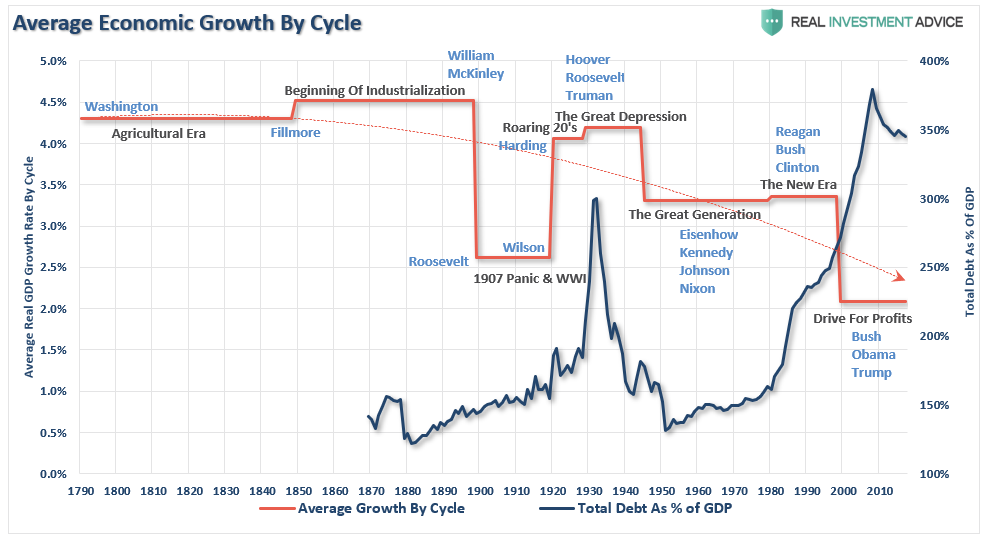
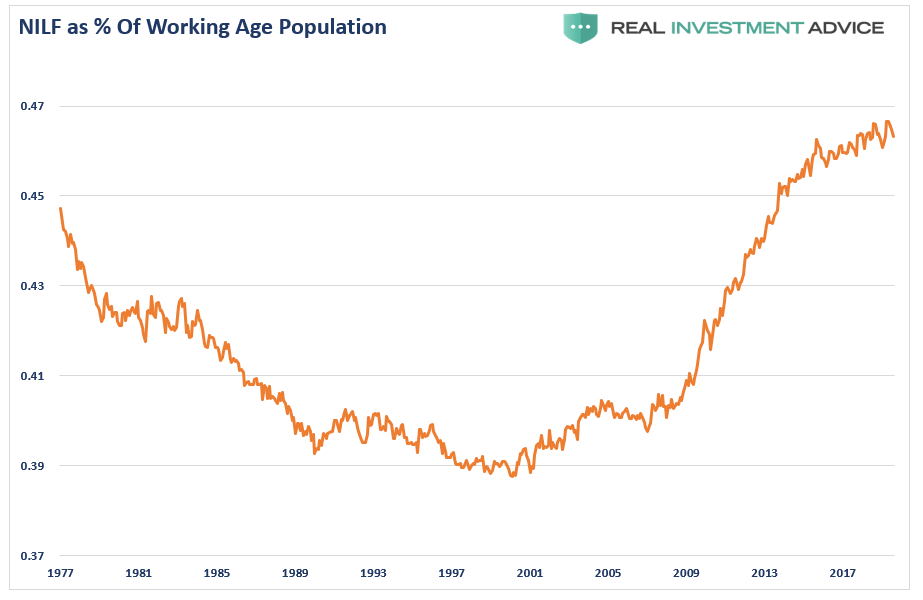
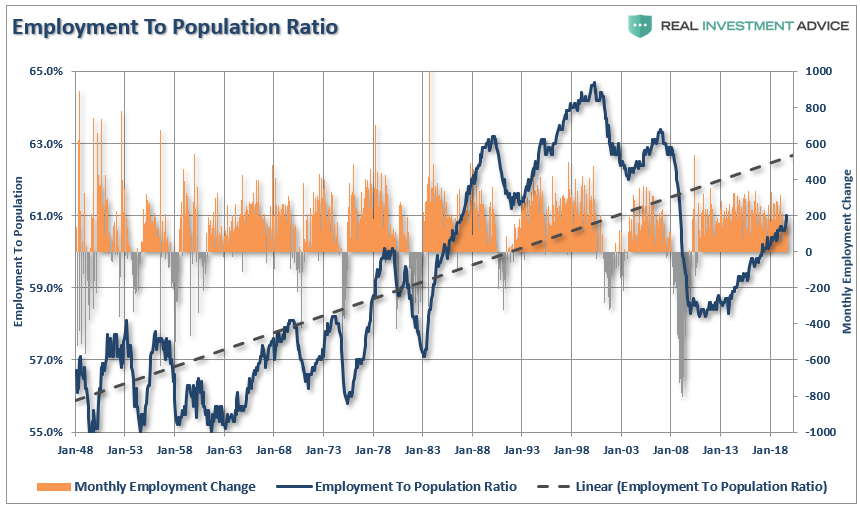
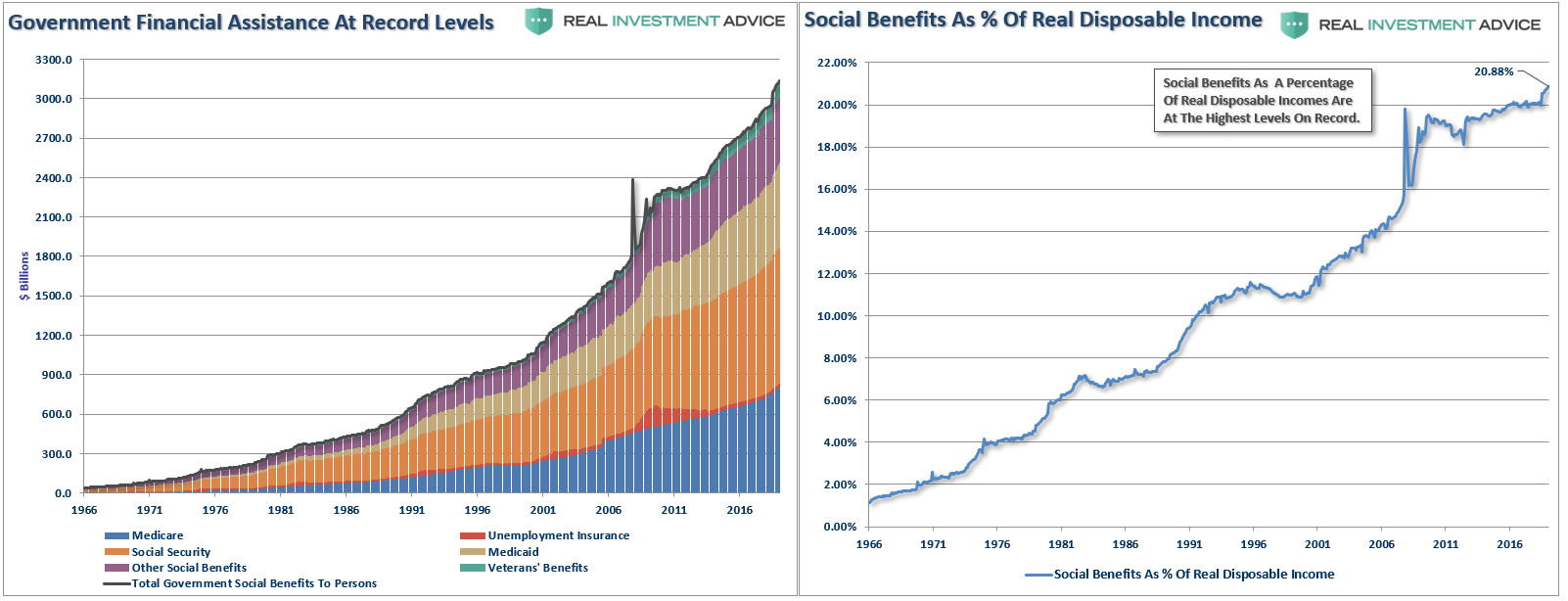
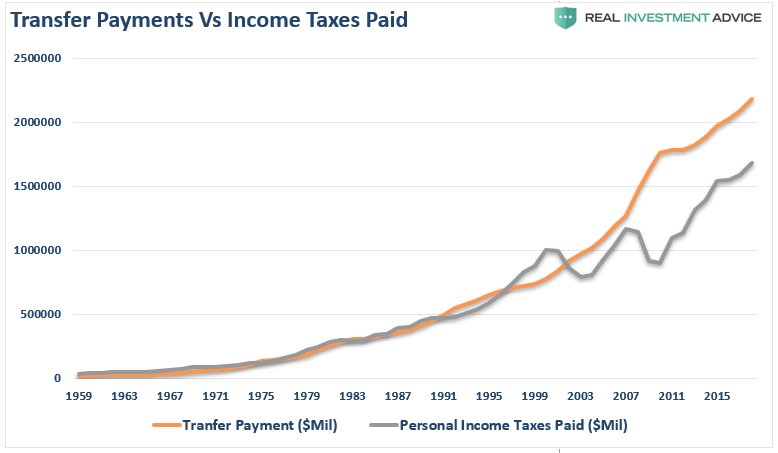
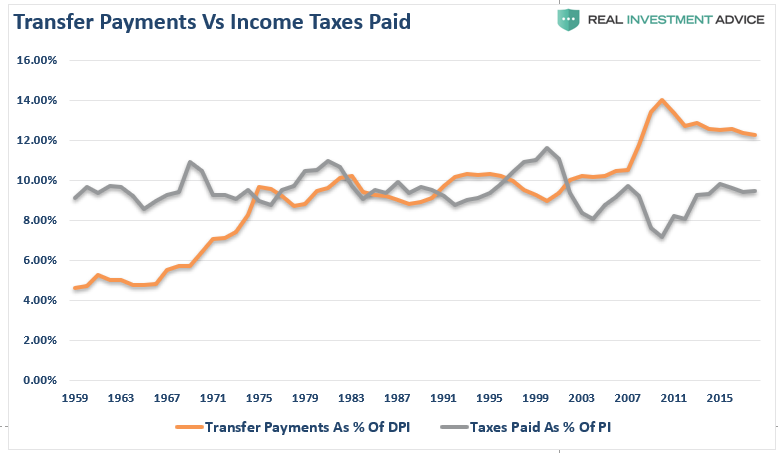
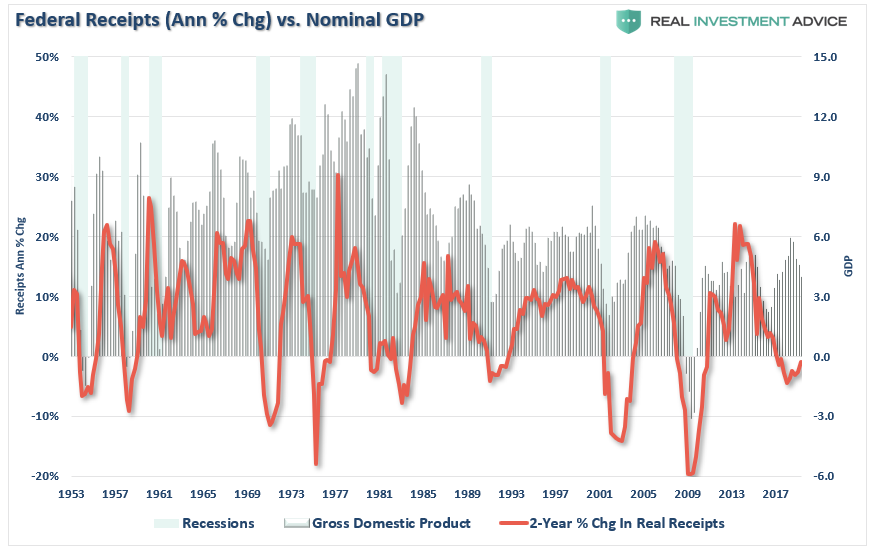
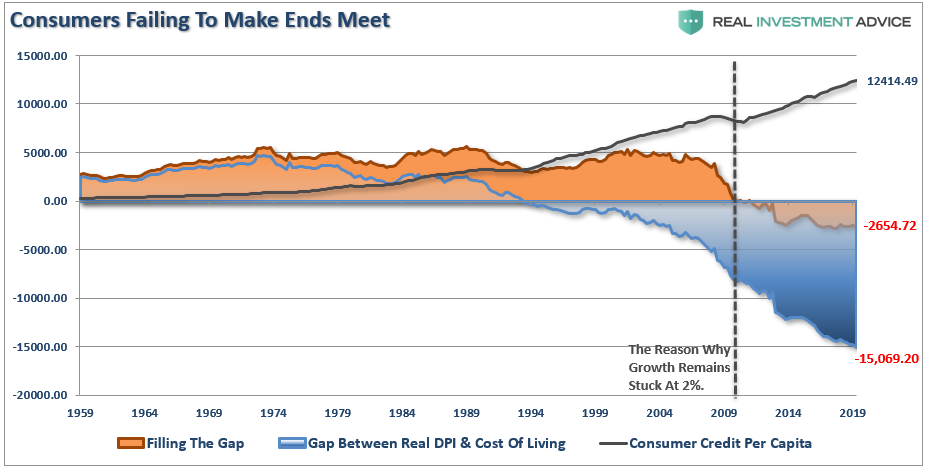
[…] lub wasali. Prawdziwym indykatorem autentycznej ekonomicznej kondycji USA, są oficjalne dane (https://anti-empire.com/strongest-economy-ever-americans-receive-more-in-benefits-than-pay-in…😉 wskazujące, że w 2018 roku społeczeństwo otrzymało w ramach pomocy rządowej $2,2 tysiące […]
Cute little charts and graphs…. Too bad it’s all partisan bullshit
time to crank up the printing presses.
ohhh, they’re already cranking… fulltime.
20 years ago it took approx 2 CHF to buy 1$
today it takes 1CHF to buy 1$
that’s progress.